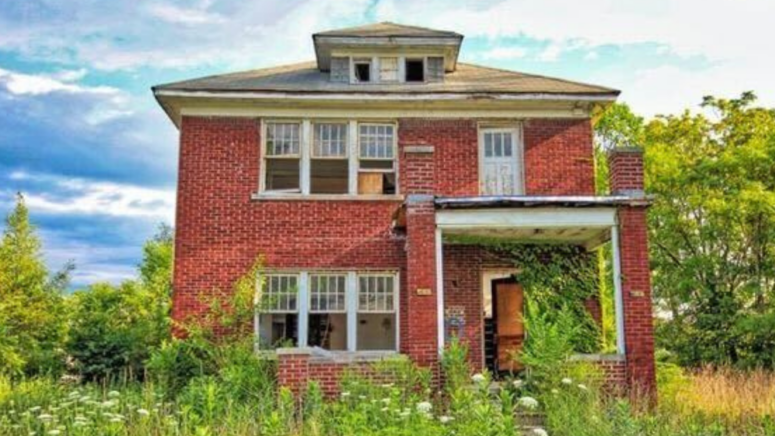How to Sell Your Home to a House Flipper in 7 Steps
- Published on
- 15 min read
-
 Valerie Kalfrin, Contributing AuthorClose
Valerie Kalfrin, Contributing AuthorClose Valerie Kalfrin Contributing Author
Valerie Kalfrin Contributing AuthorValerie Kalfrin is a multiple award-winning journalist, film and fiction fan, and creative storyteller with a knack for detailed, engaging stories.
-
 Jedda Fernandez, Associate EditorClose
Jedda Fernandez, Associate EditorClose Jedda Fernandez Associate Editor
Jedda Fernandez Associate EditorJedda Fernandez is an associate editor for HomeLight's Resource Centers with more than five years of editorial experience in the real estate industry.
Move-in-ready homes are a hot commodity, no matter the housing market conditions. In 2024, 42% of home buyers who decided to purchase a new home did so to avoid renovations and problems with plumbing or electricity, according to the National Association of Realtors (NAR). The NAR 2025 Remodeling Impact Report also revealed that 46% of home buyers are less willing to compromise on the condition of the home when purchasing.
When you need to unload a fixer-upper fast and avoid the hassle (and expense) of repairs, consider the option to sell the house to a flipper. Where a regular buyer sees a lemon, a house flipper sees a property brimming with potential.
House flippers usually purchase houses in as-is condition for cash, saving homeowners the expense of making repairs that lenders might require and the stress of showing and staging the home. But when you receive an offer from a flipper, you may be disappointed by the price, which will reflect all the work the house needs to become safe, livable, and marketable.
Let’s examine the types of situations that are a good match for working with an investor, how to find flippers near you, and what to expect from the process.
What is a house flipper?
House flipping is somewhat of a slang term for a specific type of real estate investing. A flipper typically buys a home at a certain percentage below market value — often off-market — then makes improvements by fixing damaged structures and refreshing outdated elements so it can be resold at a profit.
What’s considered a flip?
Property analytics company Attom Data Solutions measures house flips as any single-family home or condo purchased and resold within a 12-month time frame. The company’s latest house-flipping report found that 67,394 properties were flipped in the first quarter of 2025, representing 8.3% of home sales, between January and March 2025.
Do house flippers make a ton of money on my home?
House flipping margins can be tight and have recently become even thinner due to factors like low housing inventory and weak annual price gains.
Nationwide house flipping gross profits in the first quarter of 2025 averaged $65,000, a decrease of $5,000 from the fourth quarter of 2024. This amounted to a 25% return on investment (ROI) compared to the property’s original purchase price. However, profit margins for flippers are still down significantly compared to 56.3% in mid-2016 or the more recent peak of 48.8% ROI in 2020.
Flipping is not necessarily easy money, but it is a legitimate business model for those who can swing it and keep their bottom line in the black.
How do you sell a house with a flipper?
While the process varies from business to business, the steps involved in selling your home to a house flipper typically go something like this:
Step 1 — Decide how you want to sell: Sometimes, homeowners decide a traditional listing isn’t for them. Perhaps the house needs a lot of work, they’re facing a personal emergency, or they need the extra cash now.
Step 2 — Make contact: A seller contacts a house flipper who buys homes in their area and provides some basic information about their home. Some companies will reach out to sellers directly about buying their homes. Often, house flippers operate as We Buy Houses or “sell my house fast for cash” companies. See our full guide on how to find house flippers near you.
Step 3 — Receive a preliminary offer: At this stage, some house flippers will provide a preliminary cash offer that is subject to change after a house assessment.
Step 4 — Have your home assessed: The company schedules a walkthrough of the property to evaluate its condition, usually within 24 to 48 hours.
Step 5 — Get a firm offer: The company makes a firm offer (usually within 24 hours, sometimes on-site after the walkthrough), which you can accept or decline. Most of these companies will not negotiate on price, so the offer is a take-it-or-leave-it scenario.
Step 6 — Closing begins: If you accept the offer, you and the company will each sign the contract, and closing will begin. Some companies offer a large deposit or moving cost assistance; a few may even pay for the home upfront.
Step 7 — Payment is disbursed: The seller receives payment quickly, typically within seven days to a few weeks. This can vary by company, and sellers who work with a house-buying company often enjoy flexibility in selecting a move-out date that works for them.
The process can work differently depending on whether you’re working with a national house-buying company or a local mom-and-pop house flipper, among other factors.
How can I find flippers near me?
There are a few ways to connect with a house flipper:
Online
You can find a house flipper near you online. One option is to Google “We Buy Houses in” the city where your house is located. So, “we buy houses in Miami” or “we buy houses in Denver” are examples.
HomeLight also compiled a list of some of the top companies that buy houses for cash in the U.S., including customer reviews and locations where they operate for easy reference. Below, we also have local guides for a few of the top house flippers in several states:
Simple Sale platform
Simple Sale, a solution from HomeLight, is an online platform where sellers from across the country can request a no-obligation cash offer for their home. Simple Sale connects you to the largest network of cash buyers in the U.S., and partner investors have a wide range of investment strategies, from fix-and-flip to buy-and-hold.
Simple Sale provides fair cash offers for a wide array of properties, even those that need some or a lot of work. With Simple Sale, you can get an all-cash offer within 24 hours and sell your home in as little as 7 days, skipping the months it takes to sell the traditional way.
Real estate agent
Another great source is a top local real estate agent. Many agents have connections to investors and may be able to introduce you to one or more house flippers they have worked with in the past. They can even answer your questions along the way. Look for an investor-friendly agent who has experience with these types of deals. HomeLight would be happy to introduce you to a real estate agent with relevant skills whenever you’re ready to get started.
Are there house buying scams?
While most house buying companies are legit — you can rest assured that this business model has been around awhile — it’s always a good idea to keep an eye out for scams (or anything that just doesn’t seem right). There are some bad apples out there. Always do your research, compare your options, and consult with a trusted advisor before accepting any offer.
While many businesses are legitimate, some scammers engage in mortgage fraud schemes or try selling properties at inflated prices without significant improvements.
One scam to watch out for is the contract bait and switch. In this scam, a buyer may make a verbal agreement with you and then present a drastically altered written agreement. If you’re selling your house for cash, make sure you do your due diligence on the buyer.
When to consider selling a house to a flipper
A traditional sale might be what you had in mind when you originally bought your home. But life happens, plans change, and emergencies arise. Here are a few scenarios when working with a house flipper may make sense:
1. The house needs A LOT of work
If your home needs significant or costly improvements, selling to a house flipper might be easier than investing in renovations. A flipper has better access to the capital needed to make repairs and typically can put more time and effort into the process.
Kyle McCorkel, an investor who regularly buys, rehabs, and resells properties around Harrisburg, Pennsylvania, once bought a 1,200-square-foot townhouse for $55,000 from two brothers who wanted to sell the home on behalf of their father, who had health issues and let it fall into disrepair.
He estimated the home needed $36,000 worth of repairs, including new flooring, paint, and cleanup from water damage. “Cosmetically, it needed a complete overhaul. The dad physically couldn’t take care of the place, and the sons didn’t want to deal with it,” McCorkel shares.
Additionally, if your home has suffered severe damage, either through a natural disaster or another incident, a flipper is likely to be more willing to take it on than a typical buyer. Jim Griffin, a top real estate agent in Johnson City, Tennessee, gives an example of a 1,600-square-foot home wrecked in a fire. The structure “had to be taken down to the studs,” he says, not the ideal condition for a conventional sale.
2. You need to move fast and get the extra cash ASAP
A traditional listing is honestly just too slow for some situations. Nearly 40% of Americans cannot afford a $400 emergency, forcing them to rely on credit cards for unexpected expenses, according to an Empower report. The loss of a job or decline in a family member’s health, for example, can make it difficult to pay your mortgage.
One family sought Griffin’s help in selling a relative’s home fast so that the person could move into assisted living. The family couldn’t handle inspections and repairs at the time, but by bringing a cash buyer to the sale, Griffin was still able to attract an offer that netted roughly $130,000 for the family.
In this type of scenario, homeowners may turn to flippers for a fast and straightforward exit. Other motivations to unload a property fast include:
Today, it takes an average of 51 days for houses to go under contract with a buyer. When working with a financed buyer, sellers should tack on another 41 days, on average, for purchase loan approval. That brings the selling timeline to 92 days as of June 2025, the latest available data at the time of publication.
One of the main advantages of selling your house to a flipper — or real estate investor paying all cash — is a quicker closing, which can be reduced to as little as one to two weeks. With HomeLight’s Simple Sale platform, for example, you can connect with a cash buyer in 24 hours and close in as little as 7 days.
3. You’re overwhelmed with the listing process
Repeatedly showing the home and keeping it looking a certain way for weeks is a point of major stress for a lot of sellers. When you sell to a flipper, “You’re not going to have to put in any type of work to get the property ready to put on the market or get it presentable for photos, videos, that kind of thing,” says Shane Underwood, a top-selling real estate agent in Lexington, Kentucky.
“You’re not going to have to deal with showings and people walking through your home.” Underwood has worked with homeowners who were “relieved that they’re able to sell the property” this way because of personal or property issues.
4. You’re OK with accepting a lower offer
One big question you probably have is: How much do flippers pay for houses?
It’s important to note that if you sell to a house flipper, you likely will not receive full value for your property, and you may have to accept a significant discount. Flippers are looking to make a profit, so they will almost always offer a reduced price to ensure that happens.
McCorkel follows the flipping industry standard known as the 70% rule. What is the house flipper 70% rule? This stipulates that an investor will offer no more than 70% of a property’s after-repair value, or ARV, for a house they plan to flip. If a property needs repairs, those estimated costs would be subtracted from that 70%.
While this doesn’t guarantee a profit for a flipper, it allows for quick calculations with wiggle room for expenses such as taxes, utilities, and other costs that can eat into an expected profit while the property is on the market. So, if you’re checking what homes in your area and price range have sold for, you can expect to get a fraction of that cost, especially if you’ve let regular maintenance slide.
Here’s one example of how an investor might price your property:
The flipper reviews your home and estimates that it has an ARV of $250,000. They apply the 70% rule to $250,000, reducing the amount they’re willing to offer to $175,000. The flipper then estimates that the house needs $40,000 in repairs. The amount they offer you as a result is $135,000 ($175,000 – $40,000).
“It’s all about working backward,” McCorkel says of the math.
There are homes where the ARV is so low compared to the repairs that it’s not worth the investment. For instance, if a home might be worth $50,000 at resale but it needs $50,000 worth of repairs, he’d pass. “Even if I got the house for $5,000, I just lost money on that,” McCorkel says.
If you’re in the dark about your home’s approximate value, we recommend that you consult HomeLight’s online Home Value Estimator to get a ballpark figure to work from. Simply tell us a little bit about your property, and we’ll provide you with an instant estimate, as well as the opportunity to connect with a real estate agent for more information.
5. Your house appeals to flippers in the area
Exactly how appealing your house is to flippers depends on the price range, the work involved, and the investor’s desired profit. Any investor weighs a project in terms of time and money.
Here are some signs that a flipper might buy your property:
- It’s located in an area that buyers want. Flippers and investors often have an ideal buyer pool in mind. Ruth Lyons, a Maryland Realtor and real estate investor who does about two to three fix-and-flips per year, tries to make her flips appealing to first-time homebuyers, so she looks for three-bedroom homes in areas with good school districts.
- It’s not a historic property. Homes classified as historic require detailed permitting and inspection for repairs, says Lyons, who already must mitigate lead paint and radon in many properties. She checks sold comps to see what renovations provide the best return on investment, so she’s not tempted to over-improve a property.
- They can rehab it and sell it in months. With the townhouse McCorkel purchased, he estimates two months for rehab and two months to market and sell it, including closing time. “I try to be conservative; sometimes we can beat that, but we have other projects going on,” he says.
- It needs some amount of work done to it. The townhouse is a “cosmetic flip,” meaning that it doesn’t need significant repairs to its bones, McCorkel says. A house that needed more work wouldn’t be a deal breaker, but it would change the economics. For example, if McCorkel’s townhouse hypothetically needed a new roof or treatment for termites, he would add that to his repair costs (and timeline), then offer less to the homeowner to recoup more on the sale.
That said, some investors will avoid properties with certain issues, such as a cracked foundation, regardless of the potential profit. But McCorkel and his partner believe that if the numbers work — meaning the ARV is there — they’ll buy a property. “If it’s an $800,000 house that has a foundation issue, I’ll spend $100,000 if I can make a decent profit off it,” he says.
Then again, there aren’t that many homes like that in his area. That’s why he focuses on mid-range properties that they can buy for about $90,000 and sell for roughly $200,000. “There are opportunities to make improvements, and because of the price point, we’re able to make it work for the seller as well,” he says.

Next steps
Selling a house to a flipper can be a lifeline for some homeowners, but we understand it’s a big decision. That’s why HomeLight is here to help you weigh your options with all the facts in front of you. As a real estate platform that works with both experienced house flippers and real estate agents, we’ve got a unique perspective that the right path forward for every seller is unique.
Request a no-obligation cash offer
If you’re unsure where to start your search for a reputable flipper, consider HomeLight’s Simple Sale platform. Simple Sale operates nationwide and provides no-obligation cash offers for homes in almost any condition within 24 hours. There’s no need for repairs, staging, or open houses, and sales can close in as little as 7 days.
Review your options
Once you’ve received your home’s Simple Sale price, we’ll also provide a side-by-side estimation of how much you’d make selling your home on the open market with the help of a top agent, so you can compare. With this information in hand, you’re less likely to sell for cash and then feel those pangs of regret. In any case, it’s good to know your options and decide from there.
“Typically, we’re a good fit for someone where the house is truly not livable — they’re having health issues, and they want to move fast,” McCorkel says. If a home is in good shape, but the owner “thinks it sounds cool to sell it without doing repairs or wait three to six months dealing with an agent, I’ll be honest and say, ‘My offer would be this, but I think you’d do better just listing with an agent.’”
FAQs on selling a house to a flipper
Selling your house to a flipper can be a good idea, especially if your home needs extensive repairs, you need to sell quickly for cash, or you want to avoid the complexities of a traditional listing. Flippers typically buy homes in as-is condition for cash, offering a fast and straightforward sale. However, if you decide to sell your house to a flipper for cash, expect to receive a lower offer than the market value, as flippers aim to profit from renovations.
Flippers will likely pay less than market value for your house, as their goal is to profit from renovations. They often follow the 70% rule, offering no more than 70% of a property’s after-repair value (ARV) minus estimated repair costs. For example, if a house has an ARV of $250,000 and needs $40,000 in repairs, a flipper might offer around $135,000 ($250,000 * 0.70 – $40,000). The final offer depends on the ARV, the extent of necessary repairs, and the flipper’s desired profit margin.
The house flipper 70% rule is a guideline used by real estate investors to determine the maximum price they should pay for an investment property. It states that an investor should pay no more than 70% of the after-repair value (ARV) of a property, minus the cost of repairs. Although this is a guideline, the actual price offered by a house flipper might vary depending on their own computations and considerations. If you are wondering how to sell a teardown house or how to sell your house as-is, you might encounter offers that range anywhere from 50% to 70% of the ARV. It’s crucial to research reputable house flippers and buyers and compare offers before signing on the dotted line.
Header Image Source: (Daniel Tuttle / Unsplash)





